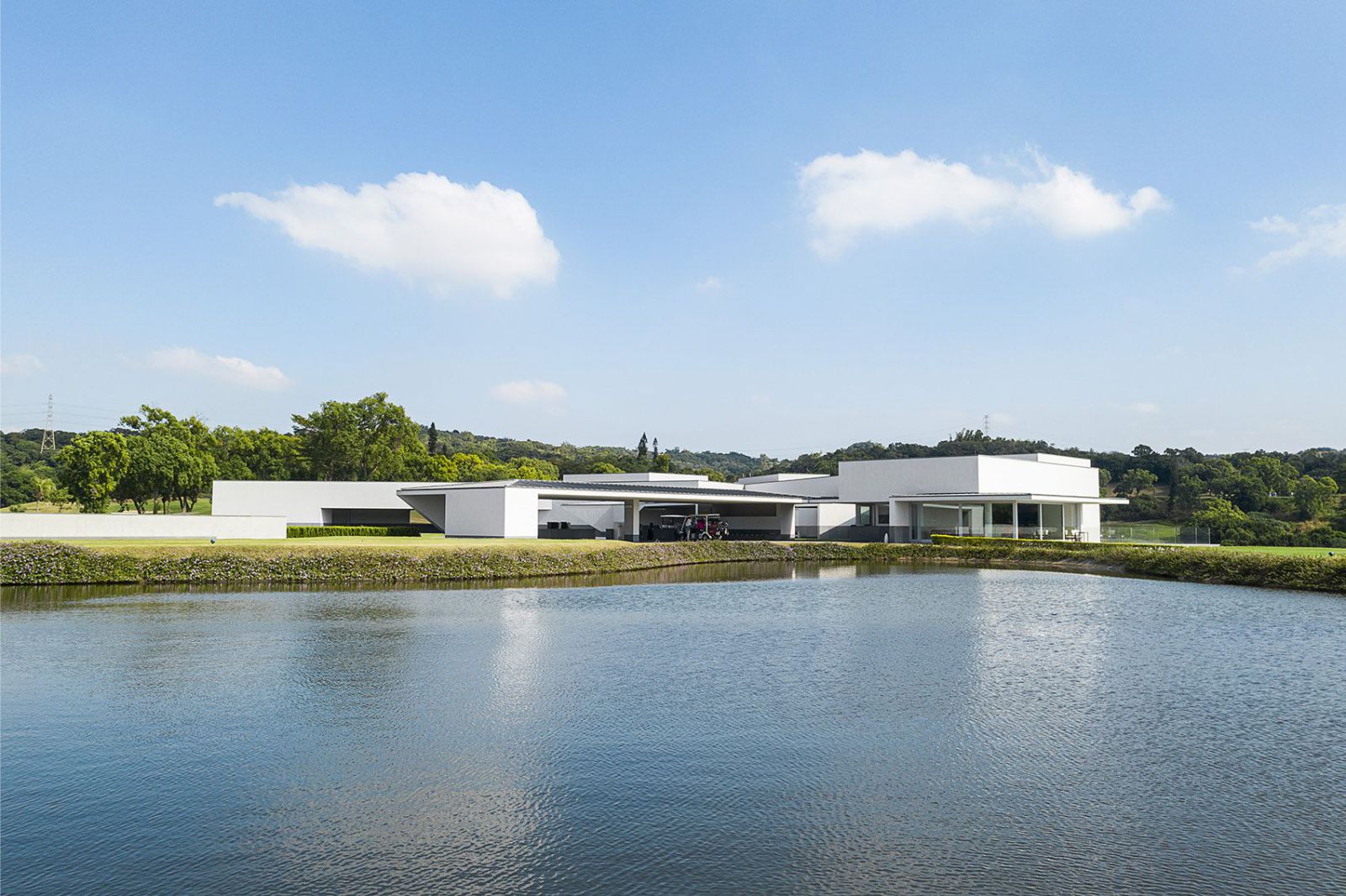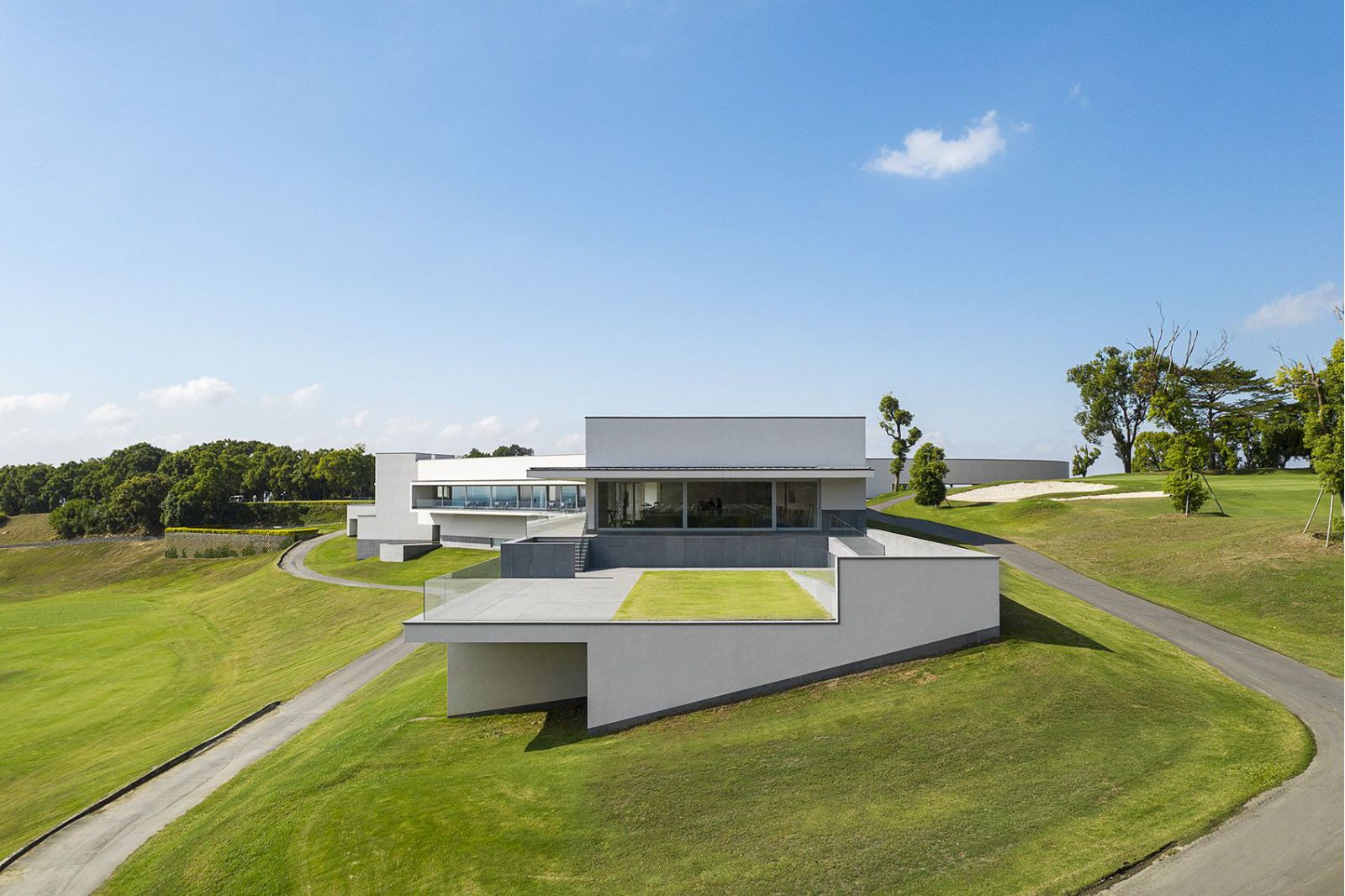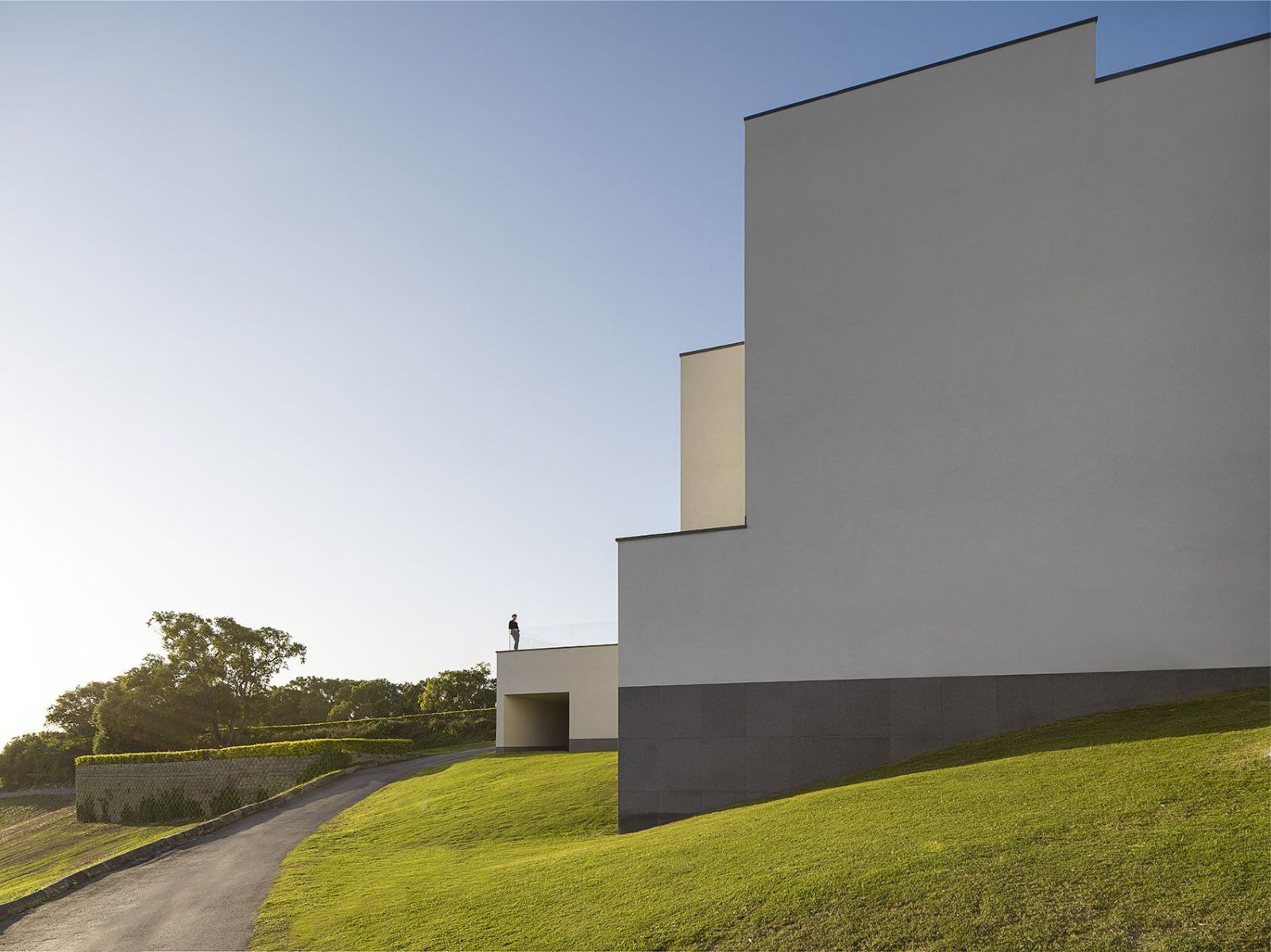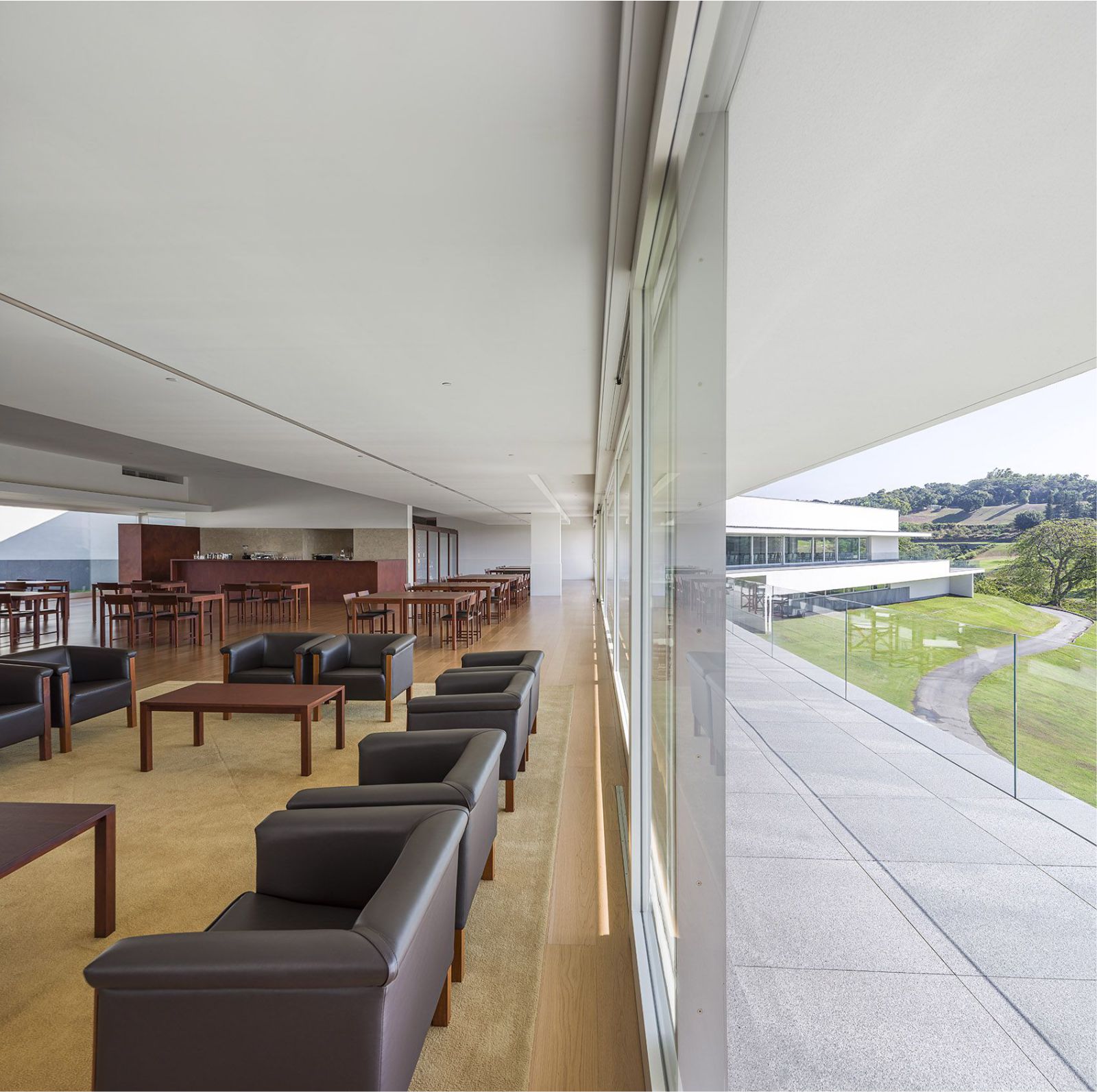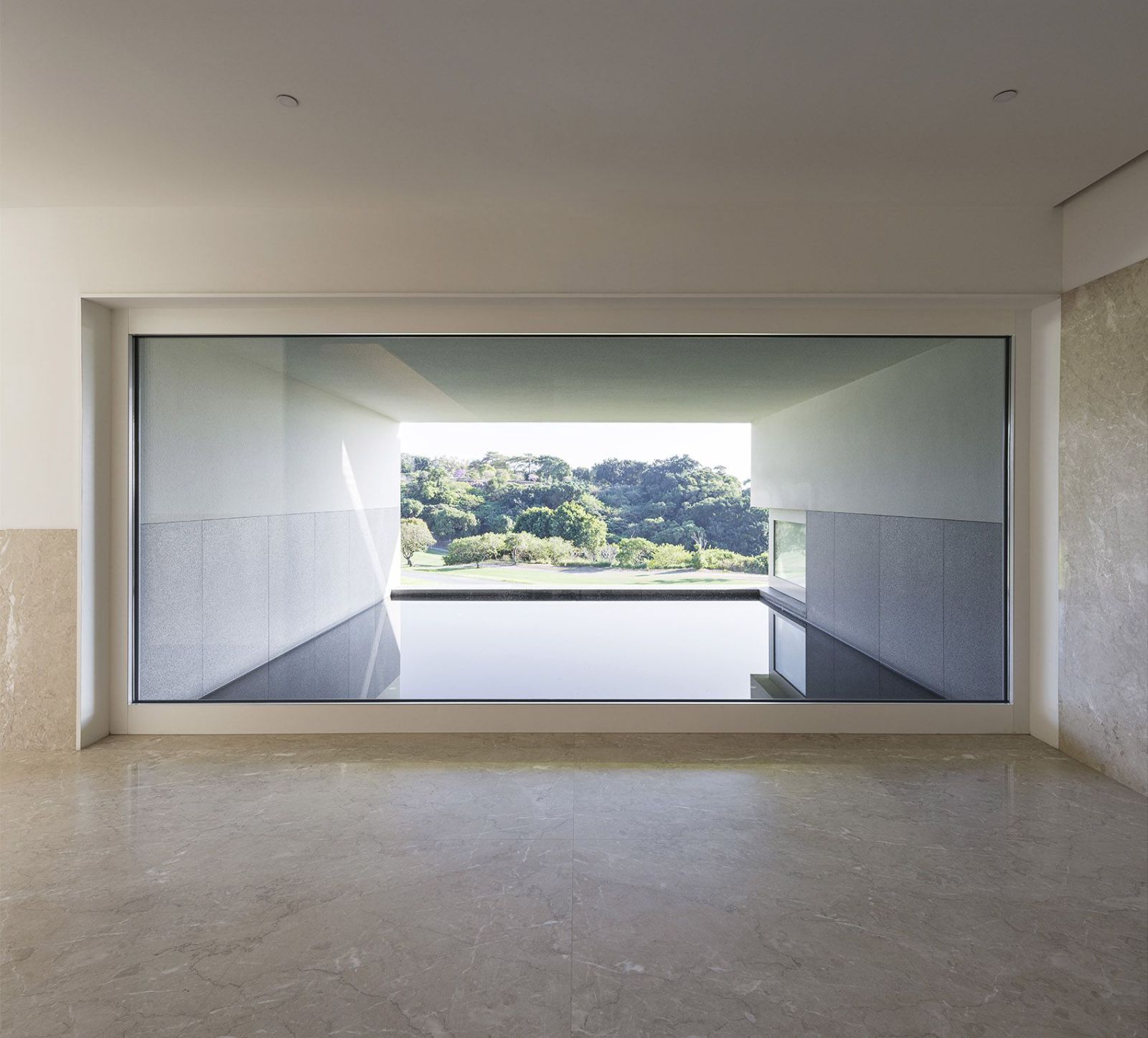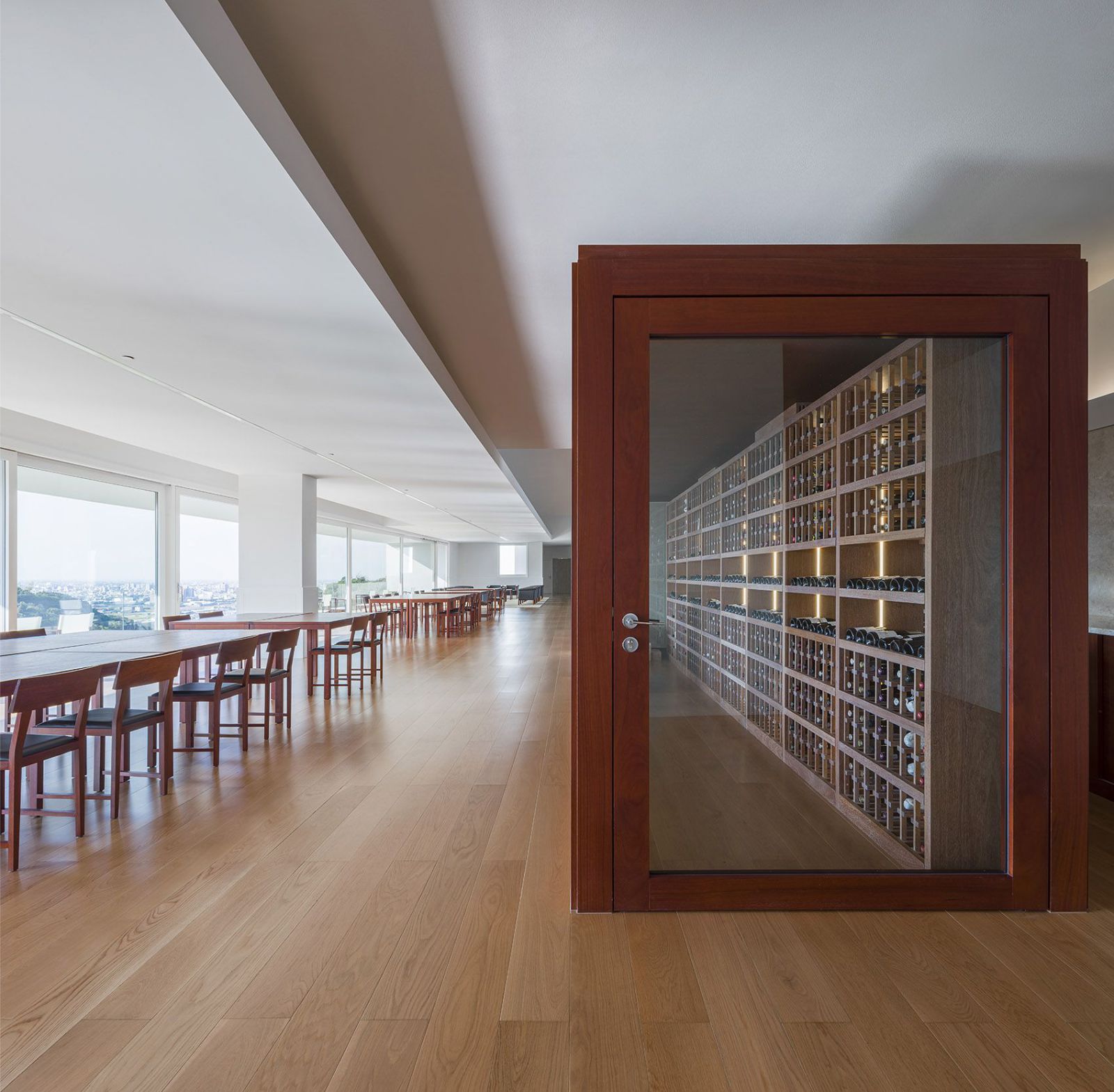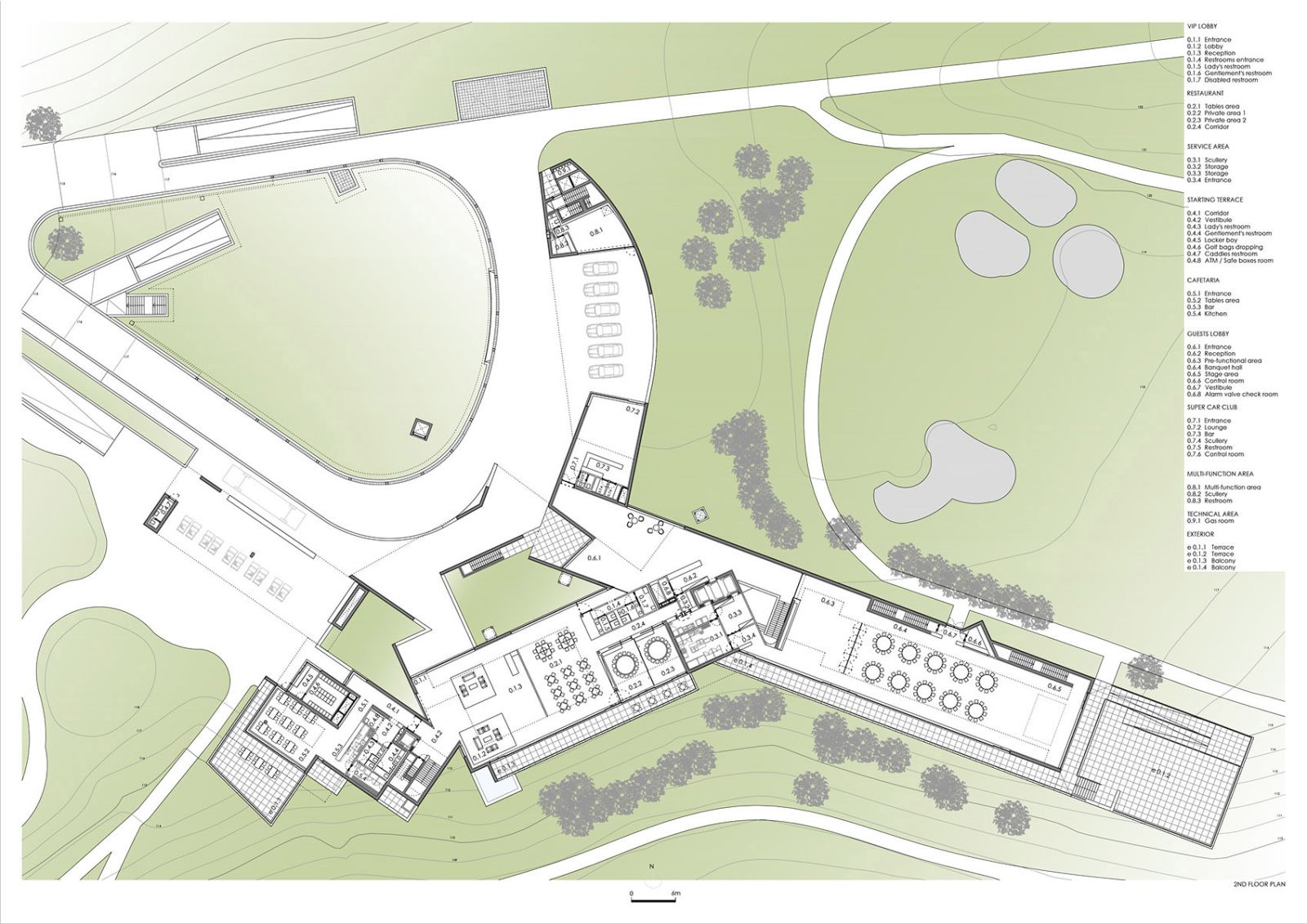The principal movement in the Game of Golf, a mix of power and elegance, and The principal movement in the Game of Golf, a mix of power and The Elite Club House building forms part of a group of projects for the replanning of Taifong Golf Course, in Chang-Hua County, Taichung, Taiwan. At the outset, the brief was merely for the design of a new Club House. For logistical and strategic reasons, we first developed the project for the small building, the Siza House, which served as the Club House during the construction of the Elite Club House.
Over time other projects were added in – the Tea House and the Gate House – as support for functions such as welcoming the players and for playing golf, and also other activities. Their construction will follow. Volumetrically, the Elite Club House greets us with open arms, setting out the entrance for each member, guest or visitor. The long volume is fragmented into other forms and different geometries, complementary to one another both in size and in function to the activities that will happen in each of them.
Although playing golf is intended to be the predominant function, there are lots of other associated activities, which complement it. There will also be other activities of a cultural or social character that can and will take place in this multi-functional building. Internally, the variety of spaces is a result of the variety and characteristics of each function and its interconnections. More complex in size and functions, this new project had to become part of an overall plan, but which would retain its own identity and image.
But the Golf Course was already there and though some adjustments to its layout were possible, the construction of the building had to be planned with the Golf Course in continuous use, all the while ensuring harmony, comfort and safety for everyone. A well-considered and very rigorous design. As a result of its multiple functions and their interconnections and hierarchies, the internal layout of the building was complex. A great deal of communication was necessary between the Client, the Club’s Management and the Designers.
The multi-functionality sought in the Elite Club House led to the carrying out of several spatial studies to address the relationship between these spaces, so that some contradictory requirements could be and were overcome. However, there will always be in this compromise, some contradiction or even disfunction, a sizeable challenge, that we – the architects – hope will be overcome through the richness of the space, light and comfort. The building is big. We don’t have a notion of its size on account of its fragmentation and because it spreads itself along the bank that overlooks the course. We never get to be aware of the whole volume.
The volume moves and forces us to move. It sways. Sometimes slowly, sometimes with more energy. It makes us sway around it. Moving around inside, the sense of the building’s size is also lessened by its layout which is broken into different functions and by the circulation between these. In this building – with enormous support from the clients – it was possible to overcome these common tendencies and achieve a balance where, volume, space, material quality and light come together to make architecture. As architects, we are first of all functionalists. It is from the demands of function – or functions – that the proposals stem and develop. Obviously without casting aside the place, our surroundings and the time and circumstances that we live in.
Form follows function and for that reason it orders itself, acquiring richness and value. Function requires light, shadow, ventilation, security and so often other elements which when carefully resolved can bring richness rather than reduction. But it is a lot of work to ensure that everything is there, yet where only the essential is seen or felt. As we move through the building, we sense diversity, relationships and moreover a great coherence, of course nothing was left to chance. Inside, the different materials and light create different environments, which allow visitors to enjoy the lush landscape of the Course, in a controlled and well-defined way.
The light mustn’t be excessive and so it has to be controlled. Architecture is the control of volume, space, voids and above all the shadows and light which generate it. The elements needed to create well-being and comfort are all present. We added furniture and other pieces which, if excessive could unsettle the space created. Sometimes there is a huge fear of emptiness and a huge tendency to fill spaces with large quantities of furniture and other things, which in no way bring us comfort. Quite the opposite happens, they generate an enormous racket, causing discomfort and above all vulgarity and ugliness.
The same is true in relation to ceilings and the quantity of unnecessary artificial lighting, where lighting schemes are confused with what is comfort and above all beauty. Materials were chosen taking into account function, but also the hierarchy of each space. Sometimes, the choice of materials is a sequence – or a consequence – of the spaces and then it isn’t us choosing them. It is the space that makes demands. Sometimes it isn’t easy to explain how spaces make their own demands and how they don’t depend on us.
Now that the process is complete – or almost so, as we still have the Tea House and the Gate House to build – I already miss the trips, the meetings and the site visits, so often in humid heat, where – incomprehensibly – there are those who insist on playing a round of Golf and then enjoying the company of friends. To be an architect is to do good. Good that will provide pleasure to those who live in what we designed and have helped to construct. The Elite Club House building is now complete and fully functioning. I haven’t visited it since its inauguration. I am sorry. I ask myself if it could have been better? I don’t think so! Source by Carlos Castanheira.
- Location: Chang Hua County, Taiwan
- Architect: Álvaro Siza with Carlos Castanheira
- Office in Portugal: CC&CB – Architects, Lda.
- Project Coordinator: Elisabete Queirós
- Collaborators: Nuno Campos, Pedro Afonso, Erika Musci, Joana Soeiro, Germano Vieira, Mariana Mendes, Sara Pinto, Rita Saturnino, Catarina Araújo, Sofia Conceição, Nuno Rodrigues, Jorge Pinheiro
- Creative Integration Consultant: Xue Xue Institute, Xue Xue Foundation
- Office in Taiwan: Ho+Hou Studio Architects + Studio Base Architects
- Project Coordinator: Jen Suh Hou, Albert Ho
- Collaborators: Si Yin Wu
- Principal in charge: Ming Wei Hwang
- Collaborators: CJ Wang, Chao-Yu Chen, Hsuan-Mu Huang, Mark Sun
- Project management & construction supervision: HO+HOU Studio Architects + Studio Base Architects
- Consultants: G E T – Raul Bessa (Climatization)
- Structure: Envision Engineering Consultant
- Electricity: Majestic Engineer Consultants.INC
- Mechanical Installations: HungChun Engineer Consultant
- Construction Company: Lee Ming Construction
- Client: Taifong Golf Club
- Total Building Area: 11 886 m2
- Year: 2020
- Photographs: C.K.L., Courtesy of Antonio Choupina




